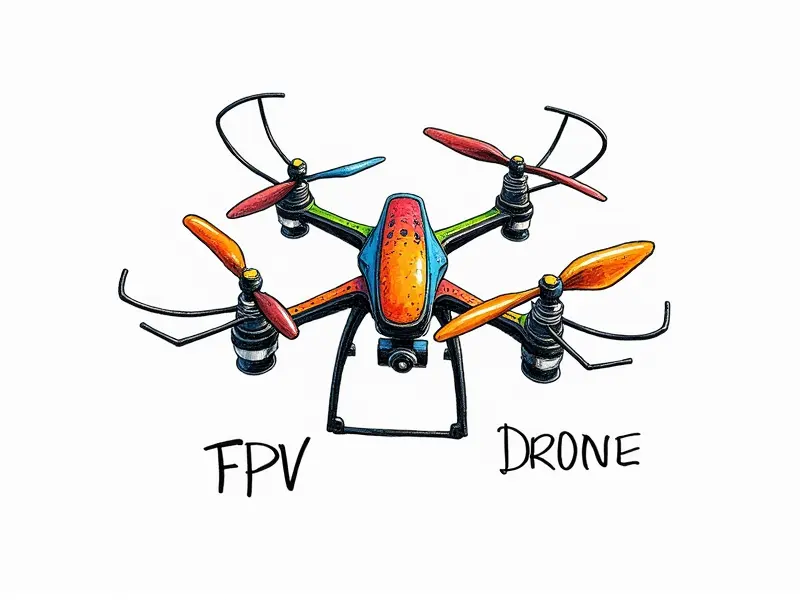FPV drone racing rules?

FPV Drone Racing Rules
First-person view (FPV) drone racing is an exhilarating and competitive sport that requires adherence to strict rules and guidelines. Whether you're a seasoned racer or a newcomer, understanding the regulations governing FPV drone racing can make all the difference in your performance and safety on the track.
FPV Drone Racing Safety Guidelines
Safety is paramount in any form of aerial sports. When it comes to FPV drone racing, adhering to safety guidelines ensures that both participants and spectators remain unharmed during races. Key considerations include:
- Helmet Compatibility: Ensure your goggles are compatible with full-face helmets or use a specialized headgear designed for FPV.
- Racing Gear: Wear protective gear such as gloves, knee pads, and elbow pads to minimize injury risks.
- Drone Maintenance: Regularly inspect your drone's propellers, frame, and electronics for wear and tear.
- Airspace Regulations: Familiarize yourself with local airspace laws and obtain necessary permits before flying in competitive events.
Mastering FPV Drone Competition Rules
To excel in FPV drone racing, it's crucial to master the competition rules. These rules cover everything from race format to scoring systems:
- Race Formats: Understand different formats such as knockout rounds and elimination races.
- Scoring Systems: Learn how points are awarded based on lap times, penalties, and disqualifications.
- Technical Specifications: Know the limits for drone dimensions, battery types, and camera resolutions.
Understanding FPV Drone Racing Protocols
Racing protocols ensure fair play and smooth operation during events. Key protocols include:
- Pit Stop Procedures: Follow guidelines for setting up your drone in the pit area and conducting pre-race checks.
- Communication Rules: Use designated frequencies for communication with race officials and avoid disrupting other racers.
- Post-Race Conduct: Respect fellow competitors by congratulating them regardless of outcome.
Essential FPV Drone Race Rules
The following are some essential rules every racer should know:
- Lap Counting: Accurately count laps to prevent disqualification due to missing or exceeding the required number of laps.
- Safety Zones: Identify and respect safety zones where flying is restricted to avoid collisions with other drones or obstacles.
- Doping Regulations: Stay informed about any prohibited substances that could affect your performance.
FPV Racing: Know Before You Fly
Before taking off for a race, ensure you're fully prepared:
- Flight Practice: Gain experience by practicing in controlled environments prior to competitive events.
- Race Day Logistics: Arrive early on race day to set up your equipment and get familiar with the track layout.
- Weather Conditions: Check weather forecasts and be prepared for changes that could impact visibility or performance.
Top 5 Must-Know FPV Racing Regulations
The top five regulations every racer should understand include:
- FCC Compliance: Ensure your drone complies with Federal Communications Commission (FCC) guidelines for radio frequencies.
- Track Limits: Adhere to designated track boundaries and avoid encroaching into spectator areas or other race lanes.
- Doping Tests: Be prepared for random doping tests if participating in sanctioned events.
- Racing Insurance: Obtain appropriate insurance coverage before competing in major tournaments.
- Safety Briefings: Attend mandatory safety briefings to learn about emergency procedures and evacuation routes.
FPV Racing Frequency Band Rules
Selecting the correct frequency band is crucial for clear communication during races. Common bands used include:
- 5.8 GHz: Widely used due to its high bandwidth and low interference.
- 1.3 GHz: Used in some countries where 5.8 GHz is restricted or crowded.
Global FPV Racing Event Standards
Different regions may have unique standards for organizing and conducting FPV racing events. Important considerations include:
- Safety Certifications: Ensure all drones meet safety certification requirements specific to your region.
- Event Permits: Obtain necessary permits from local authorities before hosting or participating in races.
- International Competitions: Familiarize yourself with rules for international events, which may differ slightly from domestic regulations.
FPV Drone Racing Legalities Simplified
Navigating the legal landscape of FPV racing can be complex. Key points to remember include:
- Airspace Regulations: Understand restrictions on flying drones in restricted airspace.
- Licensing Requirements: Obtain any required licenses or certifications for operating drones commercially or competitively.
- Data Privacy Laws: Be aware of data privacy laws when using FPV technology that captures video footage.
Mastering FPV Racing Track Etiquette
Track etiquette is essential for maintaining a positive racing environment. Important practices include:
- Spectator Respect: Avoid flying close to spectators and keep your drone within designated race lanes.
- Race Marshal Compliance: Follow instructions from race marshals regarding start times, lap counts, and safety procedures.
- Clean Up Responsibilities: Help clean up the track area after races by disposing of trash properly.
Understanding FPV Racing Track Limits
Track limits define where you can legally fly your drone during a race. Key aspects include:
- Boundary Markers: Identify and stay within marked boundaries to avoid disqualification.
- Race Lanes: Stick to designated lanes to prevent collisions with other racers or obstacles.
- Safety Zones: Avoid flying in safety zones where drones are not permitted for the sake of spectator and competitor safety.
Conclusion
Mastery of FPV drone racing rules is essential for success on the track. From adhering to strict safety guidelines to understanding complex regulations, every aspect contributes to a safer and more enjoyable experience for all participants. By staying informed about the latest protocols and standards, you'll be better prepared to compete at the highest levels of this exhilarating sport.

